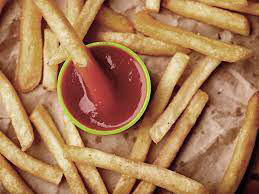Fast food is readily available in the United States and many other countries in the world as a quick meal choice, but it can be unhealthy to eat this type of food regularly. A recent study published in Clinical Gastroenterology and Hepatology examined the impact of fast food consumption among adults in the U.S. and its relationship to fat buildup in the liver.
The researchers found that consuming 20% or more of daily calories from fast food can increase the risk of developing fatty liver disease, also known as steatosis.
Fast food offers convenience to consumers, and eating fast food is highly popular in the U.S. For example, picking up a pizza or fried chicken is often quicker than preparing a meal at home. However, fast food choices often have high amounts of added salt and fat and may not be a good source of certain nutrients.
Tarra Bassi, board certified nutrition specialist, who was not involved in the study, explained to Medical News Today:
“Food served at fast-food restaurants is often high in fat, calories, and sugar but low in nutrients and fiber. While eating the occasional fast food meal isn’t a problem, consuming it regularly may raise your risk of obesity, heart attack, non-alcoholic fatty liver disease, and other health issues.” One disorder of interest related to fast food consumption is nonalcoholic fatty liver disease (NAFLD)Trusted Source or nonalcoholic hepatic steatosis. This a broad category of liver conditions that have to do with fat accumulation in the liver and the liver damage this buildup can lead to.
People with nonalcoholic fatty liver disease can experience cardiovascular disease, liver cancer, or end-stage liver disease as complications. This study included adults ages 20 and older and utilized data from the National Health and Nutrition Examination Survey. Researchers analyzed data from dietary recall surveys and measured steatosis within specific parameters.
In their analysis of almost 4,000 adults, 29% received 20% or more of their daily calories from fast food sources. Researchers found that 20% or more of daily intake from fast food was associated with increased steatosis.









